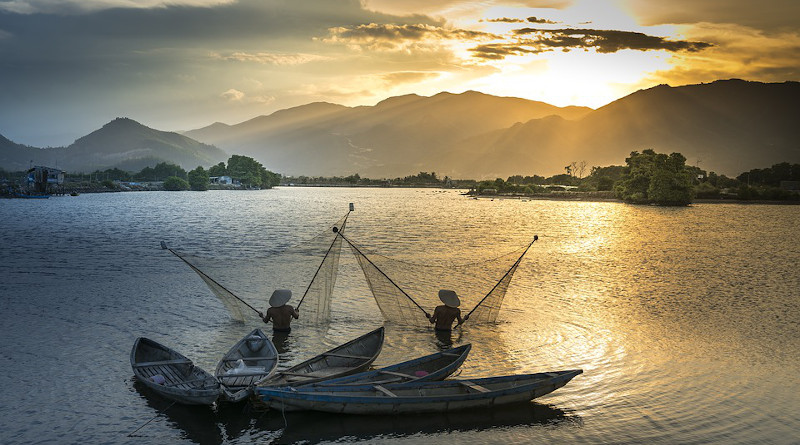US And Mekong Region: Cooperation For Sustainable And Inclusive Economic Growth – OpEd
By Satu Limaye
In recent years, relations with Southeast Asia have emerged as an important pillar of US engagement with the Indo-Pacific region. The Association of Southeast Asian Nations (ASEAN) is central to US foreign policy in the region, with a growing focus on the five countries bound together by the Mekong River—Cambodia, Lao PDR, Myanmar, Thailand, and Vietnam.
As they emerge from a tumultuous history, these countries must confront new elements of great-power competition even as their youthful populations push for economic growth and integration into the wider region and the world. Among other impacts, urbanization, infrastructure expansion, and climate change all affect the Mekong River, the natural resources along its banks, and the 240 million people who live in the region.
China, Southeast Asia’s giant neighbor to the north, presents special challenges, including the effects of massive upstream dam building on water flows and fisheries, extraterritorial river patrols, and plans to blast and dredge riverbeds. And it exerts great influence through the debt Southeast Asian nations incur from participating in China’s ambitious infrastructure projects.
The Chinese seek to exert influence by creating new entities and rules that would undermine the best practices and principles of long-standing institutions in the region. In this context, the US emphasis on sovereignty, transparency, good governance, and a rules-based order is especially critical.
The US supports the Mekong region’s economic and social development through government and private-sector engagement in alignment with allies, partners, and international and regional organizations, including ASEAN. For their part, the mainland Southeast Asia countries increasingly seek US engagement as a counterweight to China’s growing influence.
Development assistance
Over the past two decades, the US government has allocated more than $2 billion in development assistance to bilateral and regional initiatives in the Mekong region. The Lower Mekong Initiative and other partnerships address numerous aspects of social and economic development.
Some projects focus on meeting the region’s growing energy needs, while avoiding damage to the river through inappropriate and excessive dam building or an increase in atmospheric pollution from coal-fired power plants. Other projects focus on improving digital connectivity and the application of information technology to infrastructure development, particularly in the region’s cities. One example is a new US partnership, announced in August 2019, with Thailand’s Ayeyawady Chao Phraya-Mekong Economic Cooperation Strategy (ACMECS), designed to attract more investment for high-quality infrastructure including digital connectivity.
Broad engagement
In recent years, the US has placed special emphasis on the Mekong region’s human capital development—so critical to long-term, sustainable progress. During the 2018–2019 academic year, more than 33,000 students from the five Mekong countries were studying in the US. More than 24,000 came from Vietnam.
As of 2019, annual US trade with the five countries of the Mekong region was valued at almost $117 billion, and two Mekong countries—Vietnam and Thailand—were among the US’s top 20 trade partners. The US has significant trade deficits with the region, however, and each of the Mekong countries faces scrutiny over human rights and environmental concerns. Nevertheless, total trade has risen steadily in recent years.
Some 3.5 million US citizens trace their origins to the Mekong region, including 2.1 million whose families came from Vietnam. Many of these Americans retain close family and cultural ties with the region. In addition to these personal ties, remittances from the US account for almost 50 percent of total remittances to Vietnam and about 20 percent of remittances to other Mekong countries.
The US private sector is represented by almost 1,000 companies active in the Mekong region. American foreign direct investment to Vietnam and Cambodia has increased by more than 10 percent in recent years, and US investment in Thailand remains robust. US companies seek additional opportunities in the Mekong region, but future investments will require reforms that will make doing business more efficient, transparent, and profitable.
According to a 2019 ASEAN Business Outlook Survey, 61 percent of US companies reported that Southeast Asia was critical to their worldwide revenue stream, and a similar percentage said they were seeking to expand their operations in the region. In light of the worldwide search for diversified, resilient, and secure supply chains, the Mekong region has a great opportunity to draw in some of the most advanced US companies if the business environment is favorable. This is all the more important at a time when government resources will be stretched and at a premium due to the COVID-19 pandemic.
American educational institutions, civic organizations, and non-governmental organizations also make important contributions to engagement and sustainable development in the Mekong region. Working on their own and with in-country and international partners, these organizations spearhead projects on the ground and in the classroom to supplement bilateral and international government efforts.
The East-West Center, for one, has made an important contribution to education, exchange, and research in the Mekong region for the past six decades. Participants in Center programs have ranged from government officials to journalists, senior scholars, students, and artists. This year, the Center published a report in collaboration with the Stimson Center—The Mekong Matters for America/America Matters for the Mekong—that highlights the important dimensions of the US-Mekong partnership. Collaborative East-West Center research projects in the region focus on the health, economic, and environmental stresses that affect rice farming and on links between unplanned urban expansion and viral disease. The Center welcomes suggestions for additional collaborations that can support cooperation and sustainable development in the Mekong region.
*About the author: Satu Limaye is Vice-President of the East-West Center and Director of the East-West Center in Washington. He can be reached at [email protected].

